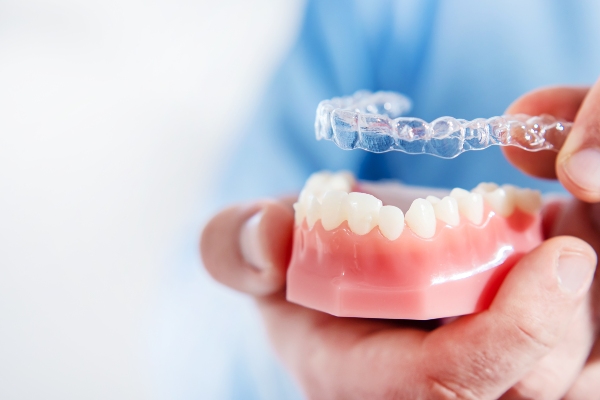 It may take a few days to become accustomed to Invisalign®, as with any orthodontic device. Continue reading to find out more about how Invisalign may affect speech. Invisalign trays fully cover the teeth, giving them a somewhat thicker appearance and feel. Some individuals may notice a little, transient alteration in their speech for the first few days after beginning Invisalign.
It may take a few days to become accustomed to Invisalign®, as with any orthodontic device. Continue reading to find out more about how Invisalign may affect speech. Invisalign trays fully cover the teeth, giving them a somewhat thicker appearance and feel. Some individuals may notice a little, transient alteration in their speech for the first few days after beginning Invisalign.
Speaking with Invisalign aligners on
After patients get Invisalign aligners, it will very certainly alter how "s," "sh," or "th" sounds are pronounced. However, the issue is often small enough that it goes unnoticed by others. When the lips and tongue acclimate to wearing Invisalign, any speech issues should go entirely. Although it is rare, if persistent speech issues occur, patients need to visit an orthodontist. Invisalign is designed to sit tightly against the teeth and not move around. It is possible that the tray was formed incorrectly. This may result in being overly tight, too loose, or not correctly placed on the teeth. Any of these factors may make it difficult to speak with Invisalign.
Since Invisalign is composed of extremely thin plastic, the overwhelming majority of individuals who wear Invisalign have no speech problems. It is also improbable that with each new pair of aligner trays, someone develops a lisp. After a patient adjusts to wearing them, each new set of trays is identical enough to the preceding ones that the mouth and tongue need very little adjustments.
Tips to make speaking with Invisalign easier
If speaking with Invisalign aligners seems a bit awkward at first, one of the effective ways to get over it is to practice speaking, pronunciation, and diction of the words that seem to be a hassle. Repeating difficult words will help patients get used to the new aligners. It gets easier with enough practice. Reading aloud and conversing with others can help patients be more comfortable speaking with Invisalign trays. Ultimately, the objective of using Invisalign to realign the teeth is to get a healthy smile that one can be proud of.
Patients can prevent speaking with a lisp at a big event, critical meeting, or phone call by removing the aligners for that period of time. Invisalign, unlike conventional braces, can be taken out temporarily during treatment. The aligners must be removed when eating, but they may also need to be removed as required at other times. The most important thing is to wear them for at least 20 to 22 hours every day.
Almost every orthodontic device may have an impact on speech. Orthodontic devices that increase the thickness of the mouth's roof or the backs of the front teeth are more likely to create mild speech problems, which is precisely where the Invisalign aligners will be.
In conclusion
Rest assured, there is no chance that Invisalign will cause long-lasting speech problems. Since Invisalign aligners are constructed of very thin transparent plastic, any effect they may have on your speech is minimal, and they are unlikely to create speech difficulties.
Request an appointment or call Citrus Grove Orthodontics at 714-464-5933 for an appointment in our Orange office.
Related Posts
Invisalign® is a modern teeth-straightening option that serves as an alternative to metal braces. Invisalign eliminates the need for brackets and wires; instead, it uses a series of clear plastic aligners to realign the teeth. Although lots of individuals are aware of the aesthetic advantages of Invisalign, like a straighter smile, there are also health…
Are you considering Invisalign® treatment? Read on to learn about some of the benefits of opting for this teeth-straightening treatment. According to the American Dental Association, teeth straightening is more than just for cosmetic purposes; it may help your overall oral health. While conventional metal braces are still widely used, modern technology has enabled the…
If you have had braces in the past, you may want to try Invisalign® to correct any crooked teeth that shifted back. Read on to learn more. Fortunately, you can receive Invisalign aligners despite having already had braces. Interestingly, those who have to undergo teeth straightening for a second time usually go for Invisalign instead…
